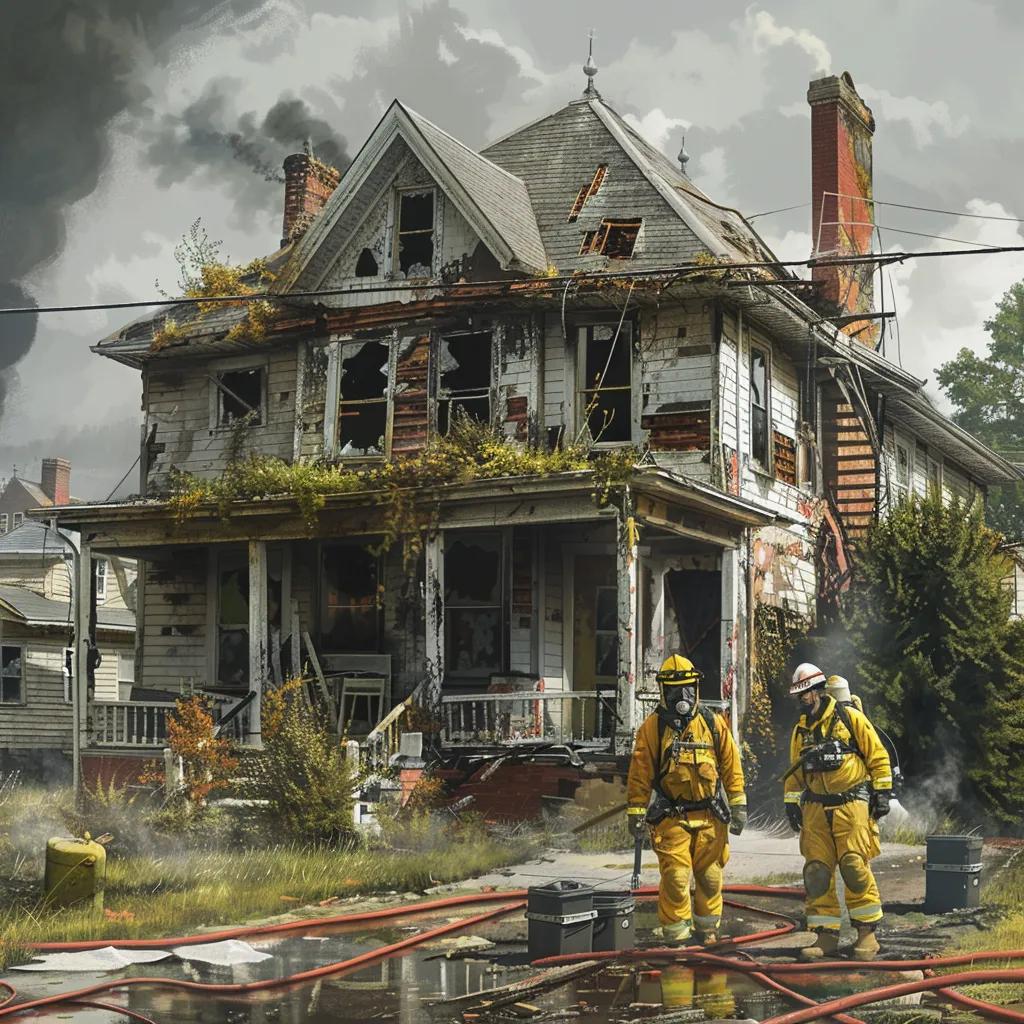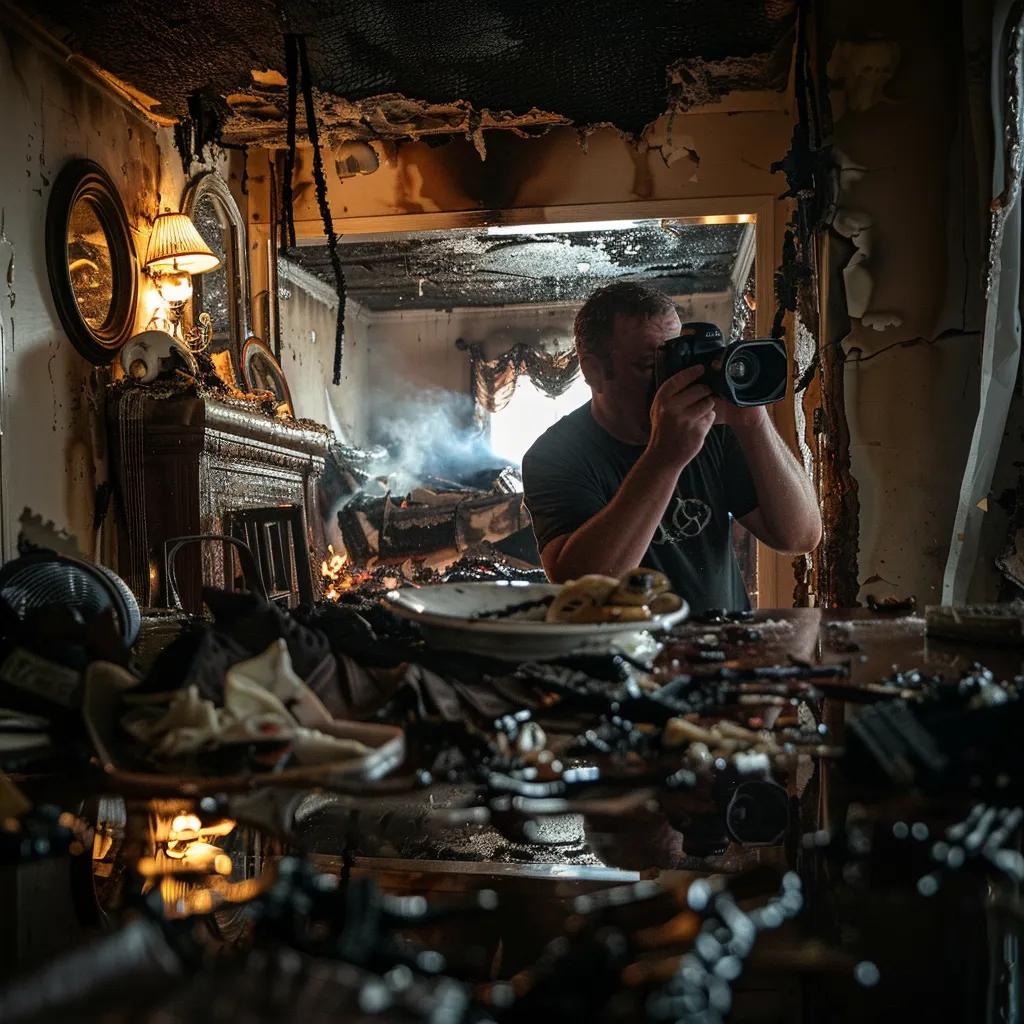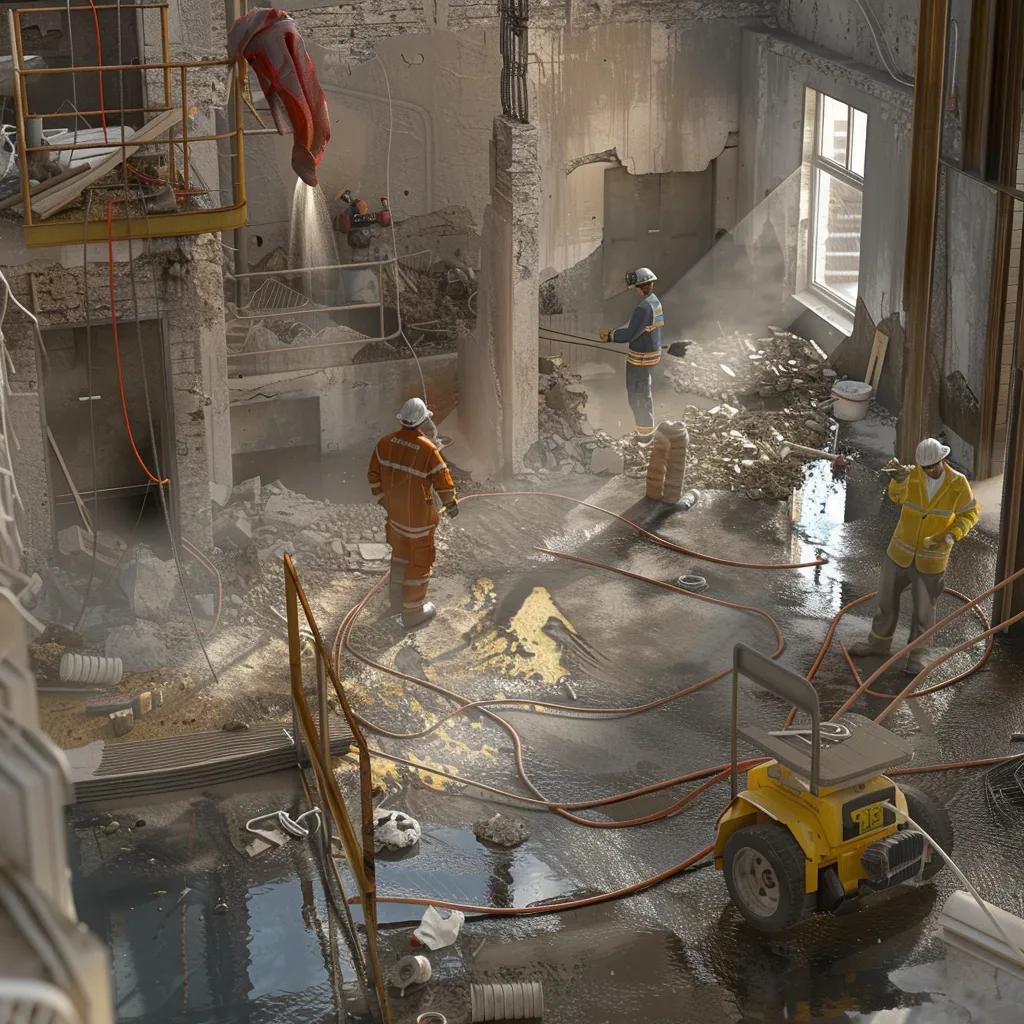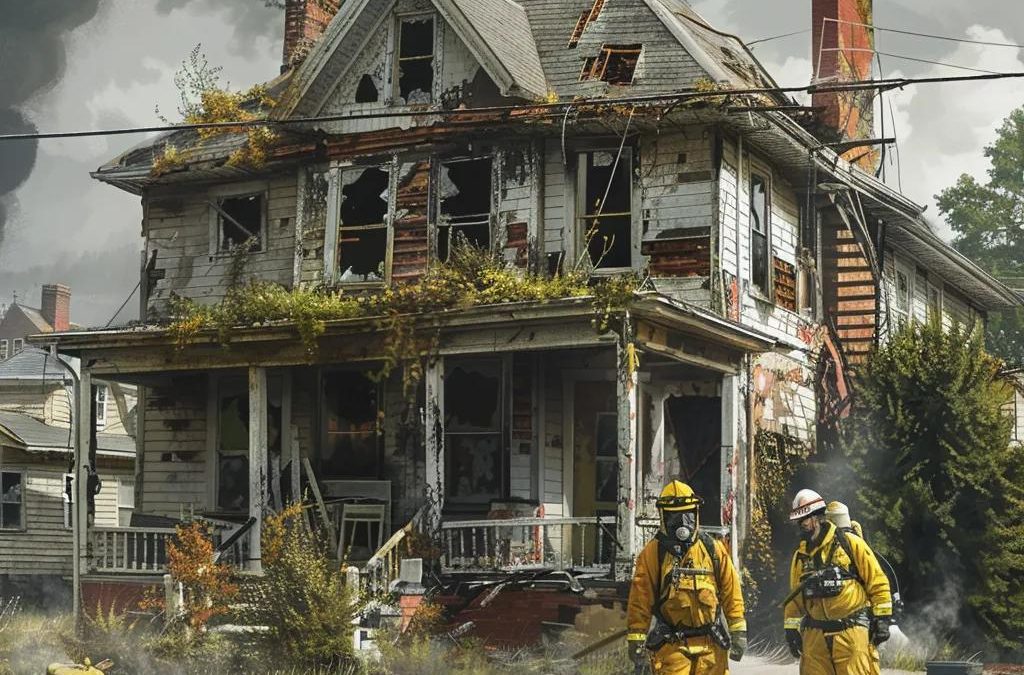
What to Expect During Fire Damage Restoration: Step-by-Step Fire Damage Recovery Process

A home structure fire occurs every 95 seconds in the U.S., causing $23 billion in property damage each year. Fire damage restoration is the systematic sequence of actions—from initial assessment to final repairs—that returns a burned property to its pre-loss state while safeguarding occupants and maximizing insurance support. In this guide on fire damage recovery process steps, New York homeowners, property managers, and commercial building owners will learn immediate safety measures, professional damage evaluation techniques, core cleanup and reconstruction phases, insurance claim strategies, post-restoration inspections, timeline expectations, and expert advice for choosing the right restoration partner. Restoration Experts serves Long Island, NYC, Suffolk, and Nassau with 24/7 emergency board-up services, advanced cleanup technology, and insurance claim assistance to streamline your recovery journey.
Fire Damage Costs
Home structure fires in the U.S. occur frequently, leading to substantial property damage annually. These fires result in billions of dollars in losses, emphasizing the importance of fire safety and effective restoration processes.
National Fire Protection Association, Fire Loss in the United States (2024)
This research highlights the financial impact of fires, which underscores the need for prompt and effective fire damage restoration.
What Are the Immediate Steps After a Fire?
Immediate steps after a fire are critical to prevent further damage, protect occupants, and lay the groundwork for a seamless restoration process. Acting quickly minimizes secondary risks like water intrusion and vandalism, and supports accurate insurance documentation.
How Do You Ensure Safety After a Fire?
Ensuring safety after a fire involves securing unstable structures, verifying utility shutoffs, and protecting air quality to prevent injury or health hazards.
- Confirm that gas and electricity are turned off at the main valves.
- Ventilate with open windows and high-efficiency air scrubbers to clear smoke particulates.
- Wear N95 masks and protective gloves when entering affected areas.
- Restrict access to weakened floors, ceilings, and staircases.
Following these precautions protects first responders and residents while transitioning into professional damage assessment.
When and How Should You Contact Emergency Services?
Contacting emergency services immediately after a fire ensures prompt extinguishment, medical aid, and official documentation. Dial 911 or the local fire department as soon as flames are contained or if smoke persists. Provide your address, fire size, and any trapped occupants. Emergency responders issue an incident report—a vital document for insurance claims and restoration planning—which you should obtain before beginning cleanup.
What Is the Importance of Documenting Fire Damage for Insurance?

Documenting fire damage creates an accurate record of losses and accelerates claim approvals. Homeowners photograph every burned item, charred surface, and water-soaked area before any cleanup. Detailed inventories—with descriptions, estimated values, and dates of purchase—help insurance adjusters verify losses. This evidence reduces disputes over scope and paves the way for a faster payout.
Importance of Documentation
Detailed documentation of fire damage is crucial for insurance claims, helping to ensure accurate loss assessment and expedite claim approvals. Homeowners should photograph and inventory damaged items to support their claims effectively.
Insurance Information Institute, Filing a Homeowners Insurance Claim (2023)
This information supports the article’s emphasis on the importance of thorough documentation in the fire damage restoration process.
→ Proper documentation bridges safety and assessment, guiding the next phase of professional evaluation.
How Do Emergency Board-Up Services Secure Your Property?
Emergency board-up services secure openings, prevent weather exposure, and deter unauthorized entry. Restoration Experts provides rapid boarding of windows, doors, and roof breaches using kiln-dried plywood and industry-grade fasteners. Secured structures limit water intrusion, unauthorized access, and animal infestation, preserving remaining contents until full restoration can begin.
Board-up protection completes the immediate response, leading directly into a detailed damage assessment phase.
How Is Fire Damage Assessed and Planned for Restoration?
A professional fire damage assessment systematically identifies structural, smoke, soot, and water impacts to create a targeted restoration plan. Accurate assessment ensures efficient resource allocation, cost control, and compliance with building codes.
What Does a Professional Fire Damage Assessment Include?
A fire damage assessment includes structural inspection, soot residue analysis, moisture mapping, and safety hazard evaluation. A certified inspector documents char depth in walls, measures moisture content with infrared scanners, and tests for acidic soot. This comprehensive evaluation informs the scope of work required to restore habitability and aesthetic integrity.
How Is Structural Damage Identified and Evaluated?
Structural damage evaluation focuses on load-bearing elements, foundation shifts, and framing integrity. Inspectors use visual checks and moisture meters to detect weakened joists, warped beams, and compromised drywall. Load-bearing walls are probed for char depth and checked with magnetic stud finders to verify steel reinforcement. Identifying these issues early prevents collapse and informs reconstruction requirements.
What Are the Types and Effects of Smoke and Soot Damage?
Smoke and soot residues vary by fuel source and combustion temperature, each requiring specialized cleaning methods. The table below outlines common soot types, their characteristics, and restoration challenges.
| Entity | Attribute | Value |
|---|---|---|
| Dry Soot | Texture | Powdery, easily brushed away |
| Wet Soot | Texture | Sticky, smears on contact |
| Protein Residue | Odor | Sharp, persistent cooking smells |
| Acidic Soot | Corrosiveness | Causes metal etching and discoloration |
Acidic soot’s corrosiveness demands neutralizing agents, while wet soot requires controlled agitation to avoid surface damage. Understanding these variations guides cleaning protocols and reduces long-term staining.
How Is Water Damage from Firefighting Assessed?
Water damage assessment evaluates moisture saturation, potential mold growth, and structural swelling. Technicians use hygrometers and thermal imaging to map wet zones within walls, floors, and ceilings. Identifying trapped moisture prevents hidden mold colonies and structural rot, ensuring thorough drying before reconstruction.
How Is a Comprehensive Restoration Plan Developed?
A comprehensive restoration plan outlines tasks, timelines, materials, and cost estimates based on assessment data. It sequences water extraction, debris removal, smoke cleanup, odor control, and reconstruction phases. Clear milestones and client approvals ensure transparency and efficient resource deployment, paving the way for execution.
→ With a tailored restoration plan in place, the process moves into the core cleanup and repair phases.
What Are the Core Phases of the Fire Damage Restoration Process?

Core restoration phases deliver targeted cleanup, deodorization, and rebuilding to return a property to safe, functional condition. Executing these steps in sequence maximizes efficiency and minimizes disruption.
How Is Water Extraction and Drying Performed?
Water extraction removes firefighting residues to prevent mold and structural swelling.
- High-capacity submersible pumps evacuate standing water.
- Portable and truck-mounted extractors pull moisture from carpets and padding.
- Commercial dehumidifiers and air movers circulate dry air to achieve industry-standard 30% relative humidity.
Efficient moisture removal prevents secondary damage and primes surfaces for cleaning and reconstruction.
What Are Effective Smoke and Soot Removal Techniques?
Smoke and soot removal combines mechanical and chemical methods to eliminate residues and restore surfaces.
- HEPA vacuuming to capture loose particles.
- Dry-sponging for light soot.
- Wet cleaning with pH-balanced detergents for acidic residues.
- Abrasive soda blasting on masonry and concrete.
These techniques remove up to 98% of visible soot and prepare substrates for repainting or sealing.
How Is Odor Eliminated After Fire Damage?
Odor elimination neutralizes smoke molecules and prevents lingering smells. Technicians employ hydroxyl generators, ozone treatments, and thermal fogging to break down odor compounds at the molecular level. Air scrubbers with activated carbon filters capture airborne particulates, restoring fresh indoor air quality.
How Are Contents Cleaned and Restored?
Contents restoration uses specialized cleaning and pack-out protocols to salvage personal belongings.
- Dry cleaning for paper and textiles.
- Ultrasonic cleaning for metal and glass items.
- Packaged odor control in sealed storage.
- Reconstruction of heirlooms with custom repairs.
Restoration Experts’ off-site facility restores up to 85% of smoke-damaged contents, reducing replacement costs.
What Does Structural Repair and Reconstruction Involve?
Structural reconstruction rebuilds charred framing, drywall, and finishes using code-compliant materials.
- Framing replacement with kiln-dried lumber.
- Drywall installation and taping.
- Painting and finish carpentry.
- Flooring replacement with moisture-resistant substrates.
Reconstruction restores both safety and aesthetics, completing the recovery process.
How Do You Navigate the Fire Damage Insurance Claim Process?
Navigating a fire damage insurance claim requires understanding coverage scope, filing procedures, documentation best practices, and denial prevention tactics. Proper guidance ensures maximum recovery.
What Does Fire Insurance Coverage Typically Include?
Fire insurance policies generally cover dwelling repair, personal property loss, additional living expenses (ALE), and debris removal. The following table summarizes typical coverage components:
| Entity | Attribute | Value |
|---|---|---|
| Dwelling Coverage | Structural Repairs | Replacement of walls, roof, framing |
| Personal Property Coverage | Contents Replacement | Furniture, electronics, clothing |
| Additional Living Expense | Temporary Housing | Hotel bills, rental costs |
| Debris Removal | Cleanup Fees | Hauling and disposal of fire-damaged materials |
How Do You File a Fire Damage Insurance Claim?
Filing a claim involves submitting a completed claim form, loss inventory, incident report, and repair estimates to your insurer. Notify your claims adjuster promptly, guide them through the damage site, and provide detailed documentation. Early communication ensures accurate coverage evaluation and faster approvals.
How Can You Maximize Your Fire Damage Claim Payout?
Maximize your claim by compiling exhaustive photo evidence, obtaining multiple contractor estimates, and documenting living expense receipts. Work with a public adjuster or Restoration Experts’ insurance liaison to negotiate disputed items. Well-organized documentation often increases settlement amounts by 15–25%.
What Are Common Reasons for Fire Damage Claim Denial?
Claims may be denied due to arson suspicions, late reporting, insufficient documentation, or policy exclusions. Submitting incident reports, pre-loss home inventories, and professional estimates up front addresses these issues and reduces denial risk.
→ With approved claims and funding secured, the restoration process can proceed without financial delays.
What Happens After Restoration and How Can Future Fire Damage Be Prevented?
Post-restoration activities finalize quality control, and preventive measures reduce the likelihood of future incidents. These steps ensure long-term property resilience.
What Is Involved in the Final Inspection and Walkthrough?
The final inspection verifies that all scope items—structural repairs, cleaning tasks, and safety systems—meet project standards. A certified project manager conducts a walkthrough with the property owner, demonstrating each repaired area, reviewing warranty terms, and obtaining sign-off on completed work.
How Can You Prevent Future Fire Damage?
Preventive measures include installing smoke detectors, fire-rated doors, and residential sprinkler systems.
- Test alarms monthly and replace batteries annually.
- Keep fire extinguishers accessible in kitchens and garages.
- Schedule annual HVAC and electrical inspections to identify potential ignition sources.
Proactive safeguards reduce fire risk and enhance occupant safety.
What Are Best Practices for Long-Term Property Maintenance?
Long-term maintenance combines regular safety checks with lifestyle habits that minimize hazards.
- Clear dryer vents and chimneys of lint and soot.
- Store flammable liquids in approved containers outside the living area.
- Maintain defensible space around commercial and residential exteriors.
Consistent upkeep preserves restoration investments and prevents secondary disasters.
How Long Does Fire Damage Restoration Take?
Restoration timelines vary with damage severity, property size, and environmental conditions. Understanding duration factors helps set realistic expectations and plan temporary accommodations.
What Factors Influence the Fire Damage Recovery Timeline?
Key factors include fire intensity, structural compromise, water intrusion, and permit requirements. A small kitchen fire with minor smoke residue may resolve in 5–7 days, while a structural blaze affecting multiple levels can require 3–6 months. Local building code inspections and humidity levels also affect drying and repair schedules.
What Are Typical Timeframes for Each Restoration Phase?
Project phase durations often follow this sequence:
| Entity | Attribute | Value |
|---|---|---|
| Assessment & Board-Up | Duration | 1–2 days |
| Water Extraction & Drying | Duration | 2–5 days |
| Smoke & Soot Cleaning | Duration | 3–7 days |
| Structural Repairs & Finishes | Duration | 2–8 weeks |
| Final Inspection & Turnover | Duration | 1 day |
This timeline provides a baseline for planning alternative housing and business continuity.
How Do You Choose the Right Fire Damage Restoration Company?
Selecting a qualified restoration partner ensures efficient recovery, regulatory compliance, and lasting results. The right company combines certifications, local knowledge, and advanced technology.
What Qualifications and Certifications Should Restoration Professionals Have?
Restoration technicians should hold IICRC certifications in fire and smoke restoration, structural drying, and odor control. Certified professionals follow industry standards for safety, cleaning protocols, and equipment operation, ensuring consistent quality.
Why Is Local Expertise Important for Fire Damage Restoration?
Local expertise means familiarity with New York building codes, permit processes, and common construction materials in Long Island, NYC, Suffolk, and Nassau properties. Restoration Experts’ regional teams streamline approvals and apply solutions tailored to area-specific challenges like high-humidity summers and older building stock.
How Do Advanced Technologies Improve Restoration Outcomes?
Thermal imaging cameras detect hidden moisture, drones survey roof damage safely, and hydroxyl generators neutralize odors without harmful byproducts. Restoration Experts leverages these innovations to expedite drying, enhance accuracy in damage detection, and deliver eco-friendly deodorization. Choosing a technology-driven, locally licensed, and IICRC-certified team ensures optimal restoration results and faster return to normalcy.
Repairing a fire-damaged property demands precise coordination of safety protocols, assessment methods, cleanup phases, insurance navigation, and preventive maintenance. By following this step-by-step fire damage recovery process, supported by certified professionals and advanced equipment, you secure a swift, thorough, and cost-effective restoration. Contact Restoration Experts at (631) 555-ROOF or request a free quote online to begin restoring your home or business with confidence.
